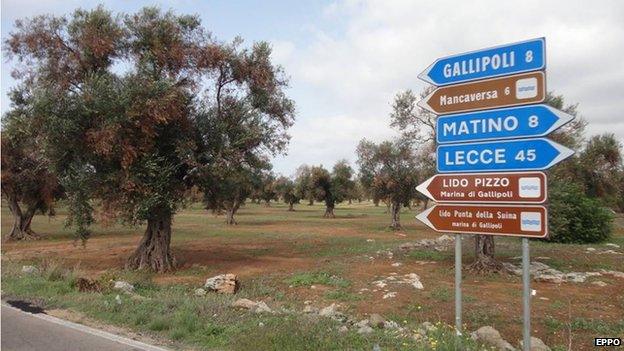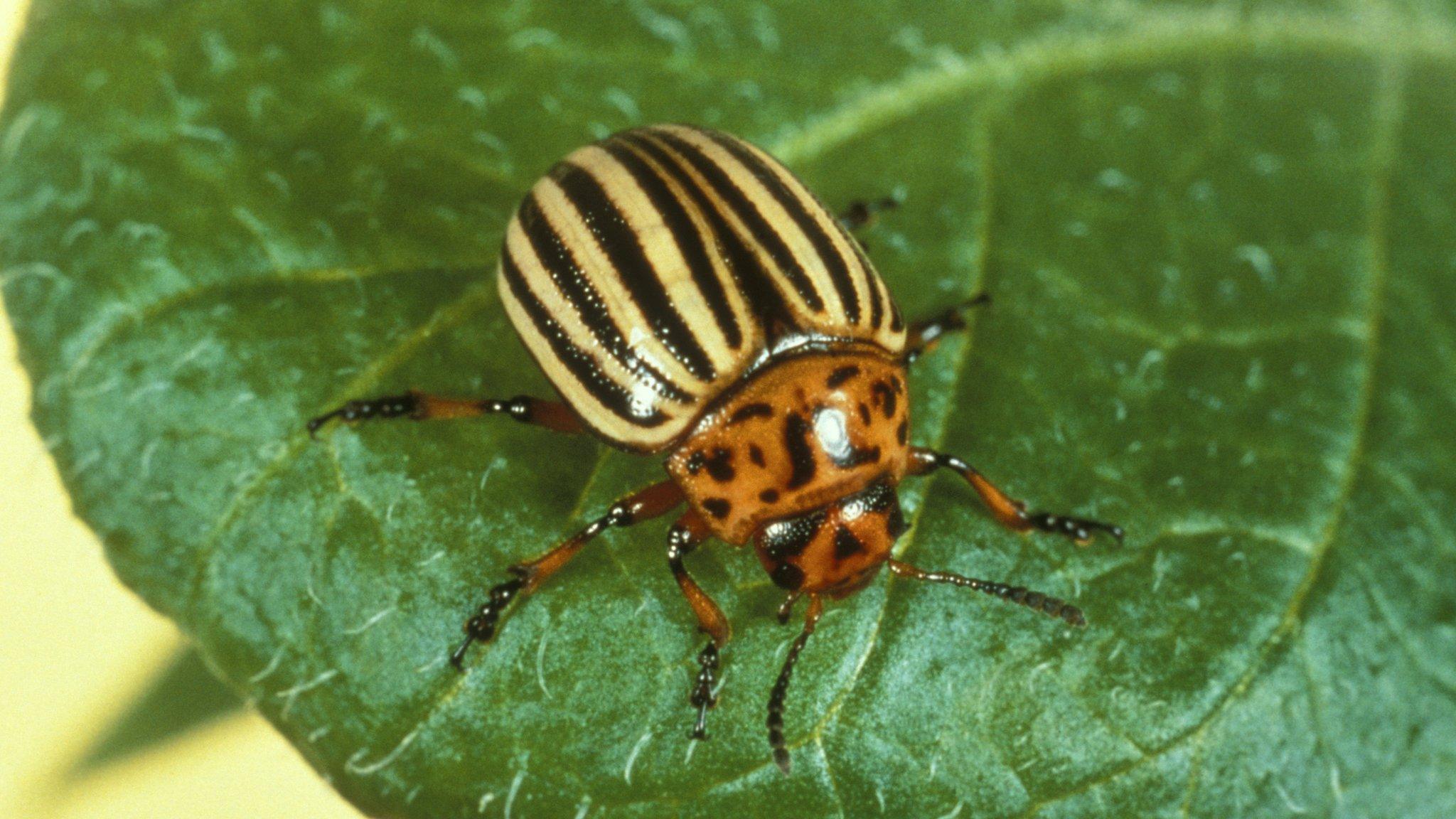'Major consequences' if olive disease spreads across EU
- Published

The "rapid decline" disease has affected thousands of hectares of olive plantations in Puglia, southern Italy
A virulent pathogen that starves olive trees poses a serious threat to EU olive production, experts have warned.
"Major consequences", such as reduced yields and costly control measures, would be the outcome if it spreads to other olive producing regions.
It is already affecting a vast area in southern Italy and, as it has numerous hosts and vectors, the bacterium is expected to spread further.
The dire warning was made in a report by the European Food Safety Authority, external.
'Major risk'
It observed that the bacterium responsible for "rapid decline" in the olive plantations outbreak, Xylella fastidiosa, presented "a major risk to the EU territory".

Olive production forms an important part of many European region's economies
"It has the potential to cause disease in the risk assessment area once it establishes as hosts are present and the environmental conditions are favourable," the risk assessment added.
"X. fastidiosa may affect several crops in Europe - such as citrus, grapevine and stone fruit (almond, peach, plum) - but also several tree and ornamental plants, for example oak, sycamore and oleander."
Outbreaks in North and South America highlighted the potential severity of the pathogen.
"It can certainly spread very quickly," explained Stephen Parnell, an epidemiologist from the University of Salford and a member of a working group that contributed to the assessment by the EFSA Panel on Plant Health.
"In Brazil, for example, where the bacterium is a problem on citrus trees, it went from just a handful of infected trees to two million infected trees in just five years," he told BBC News.
Dr Parnell explained that there were hundreds of plant species known to host the bacterium, many of which occurred in Europe.
But, he added: "There is a degree of uncertainty surrounding the epidemiological importance of these species.
"For an epidemic, you need the bacteria, you need vector populations, you need suitable hosts and you need the right environmental conditions.
"All of these things do occur in Europe, but there is some uncertainty regarding to what extent."
Hitchhiker vectors
The outbreak in the Puglia region was first reported in October 2013, where almond and oleander plants also tested positive for the pathogen.
Biosecurity measures were imposed, prohibiting the movement of propagation material from susceptible host species from the infected area.
Although the outbreak is now described as officially under control, Dr Parnell said concern remained that it could spread further as a result of the long-range spread of vectors.
The risk assessment report observed: "All xylem fluid-feeding insects in Europe are considered to be potential vectors."
Xylem is the part of a plant that transports water and nutrients from the root system to the rest of a plant.
If an insect is carrying the bacteria when it feeds on the tree, the pathogen will be able to infect the plant's life-support system.
Dr Parnell said that some of the potential vector species were like "hitchhikers".
"They can attach themselves to vehicles and be spread long distances," he explained. "They can also be transported long distances on the wind."
He added that there was also concern that there could be new introductions from outside the EU via the trade in plant material, which was suspected of being the most likely source of the Puglia outbreak.
But there was another factor in an already complex situation: "The pathogen also has a period when the host plant can be infectious but not actually showing symptoms, making it very difficult to detect.
"So there is a high chance that it could come over the border and not be noticed."
In terms of controlling the pathogen's spread, Dr Parnell said methods that worked to control outbreaks in the Americas probably would not be as effective in Europe.
"The difficulty with that is that although there are suitable environmental conditions, hosts and vectors in Europe, the epidemiological significance of these factors are not really known," he explained.
"Although we can look at what was successful in these areas in California and Brazil, I don't think you can directly map what worked there to Europe because there are different environmental factors, different host populations etc."
He concluded: "Is it fair to say that people need to learn more about the European outbreak quickly because the likelihood of another outbreak hotspot is quite high."

- Published2 September 2013

- Published9 November 2011

- Published11 October 2012
